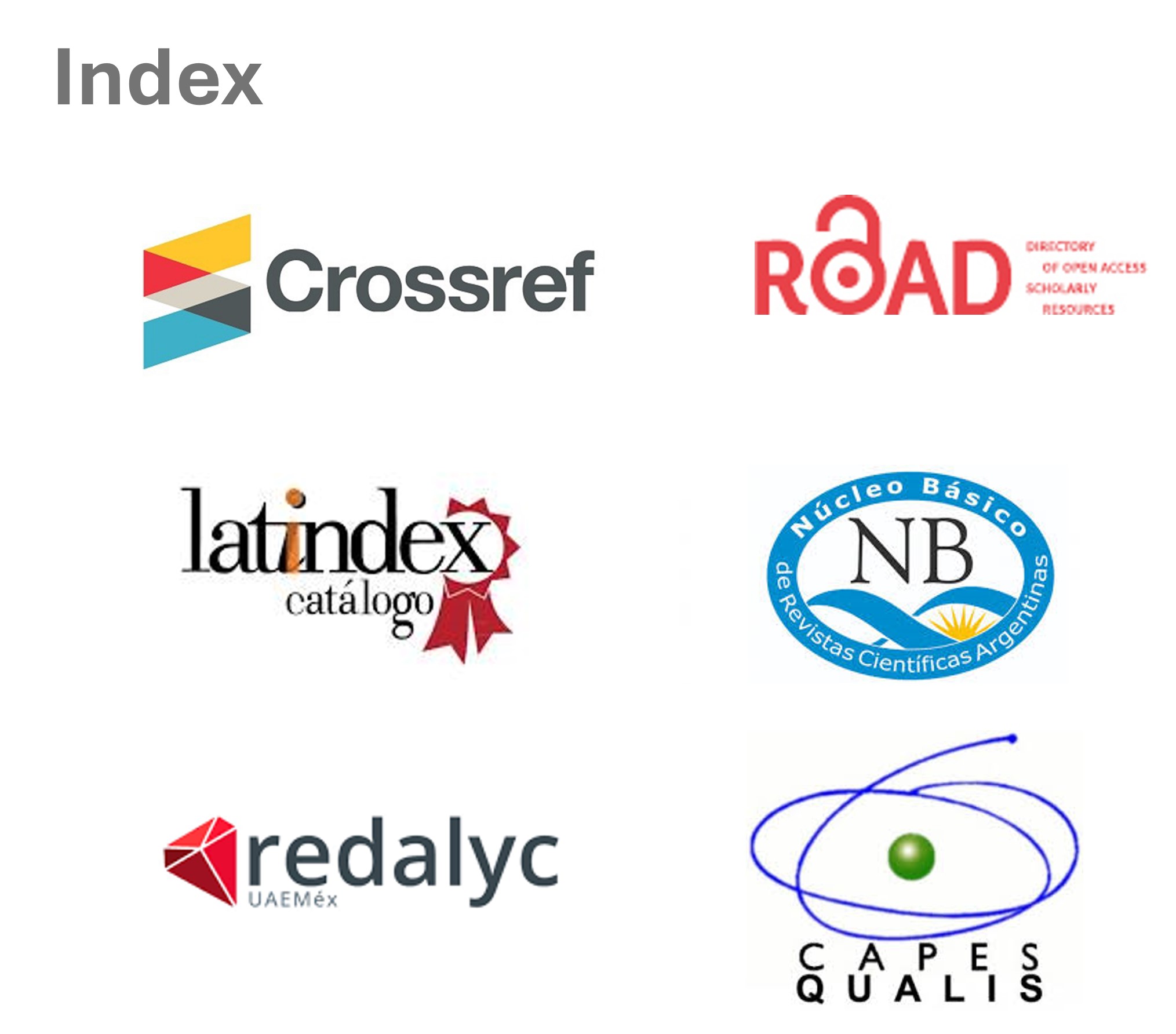Submissions
Submission Preparation Checklist
As part of the submission process, authors are required to check off their submission's compliance with all of the following items, and submissions may be returned to authors that do not adhere to these guidelines.- The submission has not been previously published, nor is it before another journal for consideration (or an explanation has been provided in Comments to the Editor).
- The submission file is Microsoft Word or RTF document file format.
- Where available, URLs for the references have been provided.
- The text is doble-spaced; uses a 12-point of Arial font; employs italics, rather than underlining (except with URL addresses); all illustrations and images will be loaded as additional files; and the tables (in editable format) are placed in the appropriate places in the text, instead of at the end.
- The text adheres to the stylistic and bibliographic requirements outlined in the Author Guidelines.
- The document is anonymised (i.e., it must not contain any mark that identifies the author), except in the case that it is a "Dossier Proposal". In case the Article (either individually or as part of a Dossier), the Research Note or the Book Review does not respect this criterion, the document will be returned to the author for correction.
- The submmition contains a supplementary document loaded as a “página principal/ cover letter” that contains the title of the document in Spanish or Portuguese and in English; the full name of the authors; the abstract in Spanish or Portuguese; the abstract in English, key words in Spanish or Portuguese and in English; and the institutional dependence of each of the authors. On this main page you can add the acknowledgments and sources of financing in a footnote.
Articles
Articles are original productions which represent a contribution to the general field of studies of science, technology and society. They are expected to meet high standards of academic quality, putting forward critical-theoretical analysis, based on empirical observation, and theoretical-methodological debates aimed at enriching the field of science, technology and society studies.
Articles can have a maximum length of 12,000 words. All articles are subject to the review process described in the scientific review policy.
Dossier
Dossiers are special sections of Revista REDES devoted to a particular topic. Each dossier is in charge of different editors, who define the thematic (relevance and scope) criteria and monitor the selection and review processes.
The authors of the articles included in a dossier can be selected through an open process or by invitation. The first modality implies the publication of a request in the web page of Revista REDES, and enables any scholar to put forward an article for a particular dossier. The invitation approach is carried out by the dossier’s editors, who invite the authors to submit their articles.
All the articles which comprise the dossier must meet the general criteria for articles, and are subject to a double-blind review by two external reviewers: one of them is chosen by the dossier’s editors, while the other is defined by the Revista REDES’ Board of Directors.
The dossier’s editors have the responsibility of preparing and introduction. Should one of the editors express interest in including an article of his or her own to the dossier, said article shall be reviewed by two external reviewers chosen by the Board of Directors, so as to preserve the integrity of the double-blind approach.
The Board of Directors will make regular requests for proposals for the dossier, which shall be evaluated by the Board of Directors. The Board of Directors, moreover, reserves the right to invite editors based on their knowledge of the subject, on the circumstantial or structural relevance of an issue, or for editorial reasons of Revista REDES.
Research notes
Research notes are documents of up to 8,000 words, aimed at disclosing the progress of current research processes. Unlike articles, they have a descriptive rather than analytical nature, and make it possible to publish research outcomes, systematizations of unpublished primary sources, rich bibliographical discussions, wide-range empirical surveys and systematizations; etc.
Research notes are reviewed in terms of relevance and quality, following the criteria put forward in the scientific review policy.
Reports
Reports are documents of up to 5,000 words aimed at analyzing recently-published books in the broad field of studies of science, technology and society.
They are reviewed based on the double-blind review process of relevance and quality.
Privacy Statement
The names and email addresses entered in this journal site will be used exclusively for the stated purposes of this journal and will not be made available for any other purpose or to any other party.








